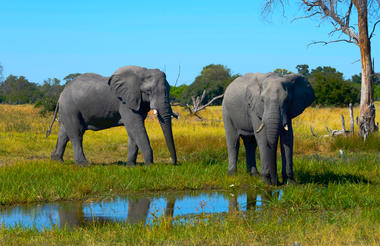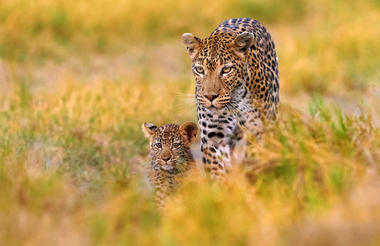A nation of spectacular natural beauty, friendly people and rich culture, Zimbabwe’s status as one of Africa’s leading safari destinations was dampened for years by its political instability. But now that the country is transcending its strife and returning to a state of equilibrium, it is once again emerging as a vacation highlight of the continent. Victoria Falls – known to locals as ‘The Smoke That Thunders’ – is one of the seven natural wonders of the world and the sheer power of this massive body of water plunging into the Zambezi Gorge is awe-inspiring and unforgettable. Lake Kariba, with its game-rich shores and islands, is an idyllic safari spot featuring mind-blowing sunsets; Hwange National Park is known for its huge herds of elephants; and a kayak trip down the Zambezi through the Mana Pools National Park will appeal to the intrepid traveller, providing close encounters with crocodiles, hippos and a host of other wildlife.
Resting on the southern banks of the Zambezi River at the western end of the eponymous falls, this popular tourist town is compact enough to walk around and makes an ideal base for travellers exploring the seventh wonder of the world, the unfathomably vast Victoria Falls. About two thirds of the falls can be viewed from the Zimbabwean side and, while the falls are undoubtedly the star attraction, the area provides both adventure seekers and sightseers with plenty of opportunities to warrant a longer stay. Popular activities include scenic flights over the falls in helicopters or micro lights, bungee jumping off the Victoria Falls Bridge, white-water rafting (seasonal), and day trips to Chobe National Park. The town itself offers some excellent accommodation and restaurant options as well as an eclectic variety of African curios and authentic art sold by friendly Zimbabwean locals who are wonderfully welcoming and eager to help you enjoy your stay.
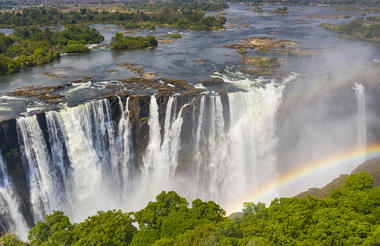
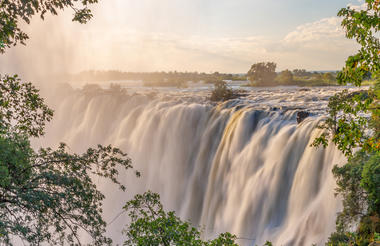
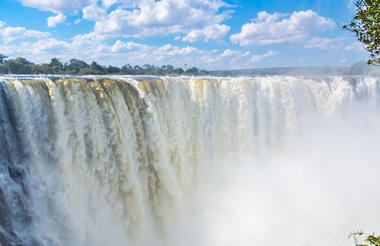
Namibia posesses some of the most stunning landscapes in Africa, and a trip through the country is one of the great road adventures. Natural wonders such as that mighty gash in the earth at Fish River Canyon and the wildlife utopia of Etosha National Park enthrall, but it’s the lonely desert roads where mighty slabs of granite rise out of swirling desert sands that will sear themselves in your mind. It’s like a coffee-table book come to life as sand dunes in the world’s oldest desert meet the crashing rollers along the wild Atlantic coast. Among all this is a German legacy evident in the cuisine and art nouveau architecture, and in festivals such as Windhoek’s legendary Oktoberfest. Namibia is also the headquarters of adventure activities in the region, so whether you’re a dreamer or love hearing the crunch of earth under your boots, travel in Namibia will stay with you long after the desert vistas fade.
Forming the boundary between Botswana and Namibia is the Chobe River - one of the most well-known perennial rivers in Africa. The Chobe River Front encompasses vast floodplains fringed by lush riverine woodlands. The abundant wildlife inhabiting the river and its shores can be viewed from a river safari where visitors can spot elephants, hippo, water-loving antelope including the rare red lechwe and a variety of other game such as giraffe, zebra, and buffalo. Nature lovers will delight in the incredibly scenic natural landscapes and bird watchers can look forward to the wide section of bird species which can be spotted along the river banks.
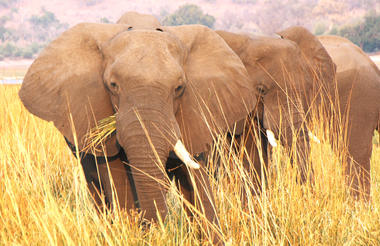
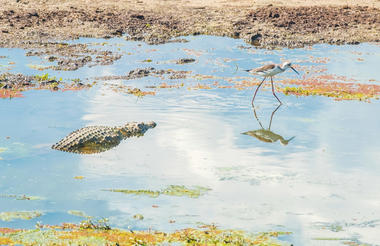
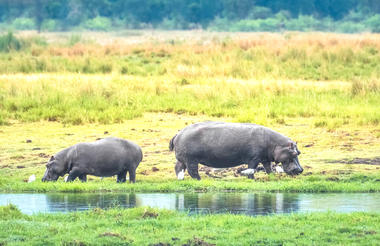
Although game is not abundant as in Namibia’s other game parks, the Mamili National Park offers visitors a true wilderness experience. There are no facilities and very few people have discovered this very wild tract of land. Cradled by the V-shaped arms of the Kwando-Linyanti River, the 32’000 hectare park was set aside in 1990 to protect and conserve Namibia’s largest wetland, the Linyanti swamps. This is the area that also mostly resembles the Okavango Delta of Botswana further southwest. From its origins in the highlands of Angola, the Kwando River flows in a southeasterly direction for nearly 1000 kilometres. It then quite enexpectantly makes a 90° turn to the northeast to follow the Gumare fault and becomes known as the Linyanti River (further east in Botswana the same river is called the Chobe River!) The annual floodwaters of the KwandoLinyanti reach the area in August and September, inundating the floodplains and flooding the relic channels. Mamili is home to Namibia’s largest concentration of buffalo herds. Predators include lion, leopard and spotted hyena, while crocodile and hippo abound in the river. The success for viewing game differs, but the best season to view game is generally June to November.
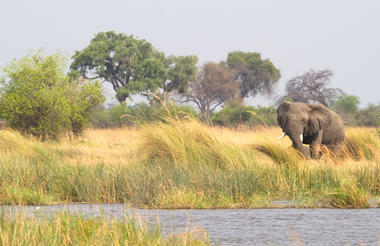
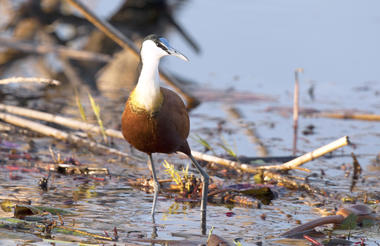
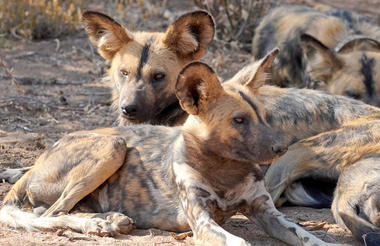
Set roughly 200 kilometres east of Rundu on the southeastern banks of the great Okavango River, the small village of Divundu is a wonderful destination from which to explore the river, game parks and national reserves of the area. Visitors can enjoy fishing or bird watching boat safaris, or visit the Mahango Game Park, which is home to herds of elephant as well as hippo, buffalo, giraffes, antelope, and many other animals. The spectacular Popa Falls, a dramatic series of cascades - are a popular must-see attraction. Divundu is also the perfect base for adventures in Botswana and the Okavango Delta.
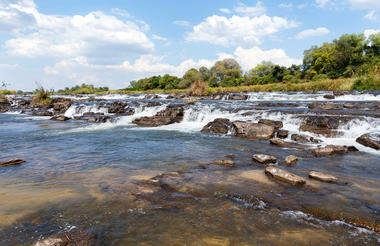
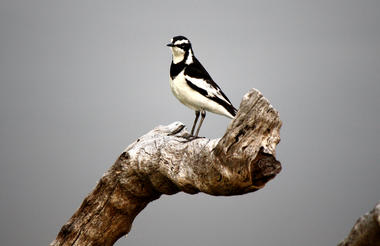
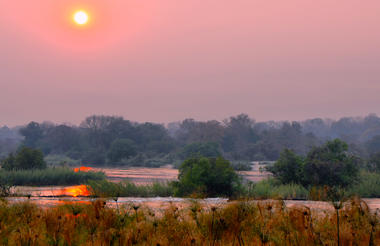
Despite recent and surprisingly rapid modernization, Botswana’s cities provide little in the way of tourist attractions. However, what the cities lack in excitement, the surrounding wilderness areas more than make up for in outstanding natural beauty. The country’s primary tourist draw card is undoubtedly the vast red expanse of the Kalahari desert and its remarkably beautiful Okavango Delta - the largest inland delta in the world - where a spectacular landscape of grassy plains and limpid lagoons provide sustenance to an extraordinary abundance of African wildlife. Other highlights include the impressive Makgadikgadi salt pans where visitors are privy to massive zebra migrations during the flood season; the Savuti plains which host large prides of lions; and the Tsodilo Hills where 4500 rock paintings form a unique record of human settlement over many millennia.
The main water source feeding the Okavango Delta, the Panhandle is a stretch of the Okavango River that follows a more-or-less straight course for approximately 70 kilometres before entering the wetlands. It is a deep channel that offers excellent tiger and bream fishing, while the surrounding woodlands and the river’s shallow waters teem with a myriad of birds. Several villages are dotted along the Panhandle, while, some 40 kilometres west, lie the Tsodilo Hills, with their plethora of tribal cave paintings, some dating back as far as 20, 000 years. There are also a number of well-established riverside camps that provide tourist accommodation.



Mababe is a small rural settlement located in the eastern part of Botswana’s North-West District, set on the vast, wild plains of the Mababe Lower Depression. Jaw-dropping vistas of yellow bushveld, sparkling rivers, and bright green forests attract nature photographers and plant enthusiasts, as well as hikers. However, it is the area’s wildlife that is its major drawcard: visitors can look forward to seeing large herds of buffalo, a good number of lions, elephants, hippos, giraffes, and cheetahs. A range of guided walks, game drives, and other activities are on offer.
